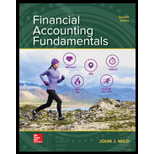
Debt Ratio:
The comparison of a company's total debts standing against its total assets is known as the debt ratio. This is inversely proportional to the equity balance of the company, as the lesser the leverage utilized by the company, stronger is its equity position and vice-versa. The debt ratio also depicts the degree of risk taken by the company with respect to the asset it holds. The higher the degree of risk being taken by the firm the higher will be its debt ratio. The tendency of the ratio reveals the utilization of resources and availing risks thereof. Also, the end users may apparently analyze the liabilities to be borne by them.
a.
Debt-ratio and return on assets for each company.
b.
Company which relies most heavily on creditor financing.
c.
Company which relies more on equity than debt.
d.
Company which avails more risk than the other companies.
Company with highest return on assets.
f.
Company which is best suited for the investors
Want to see the full answer?
Check out a sample textbook solution
Chapter 2 Solutions
FINANCIAL ACCT.FUND.(LOOSELEAF)
- XYZ Company purchased equipment for $75,000 on January 1, 2024. The equipment has an estimated useful life of 5 years and a salvage value of $15,000. Calculate the annual depreciation expense using the straight-line method.arrow_forwardI need assistance with this general accounting question using appropriate principles.arrow_forwardPlease provide the accurate answer to this general accounting problem using appropriate methods.arrow_forward
 Financial AccountingAccountingISBN:9781337272124Author:Carl Warren, James M. Reeve, Jonathan DuchacPublisher:Cengage Learning
Financial AccountingAccountingISBN:9781337272124Author:Carl Warren, James M. Reeve, Jonathan DuchacPublisher:Cengage Learning Financial Accounting: The Impact on Decision Make...AccountingISBN:9781305654174Author:Gary A. Porter, Curtis L. NortonPublisher:Cengage Learning
Financial Accounting: The Impact on Decision Make...AccountingISBN:9781305654174Author:Gary A. Porter, Curtis L. NortonPublisher:Cengage Learning- Principles of Accounting Volume 2AccountingISBN:9781947172609Author:OpenStaxPublisher:OpenStax College






